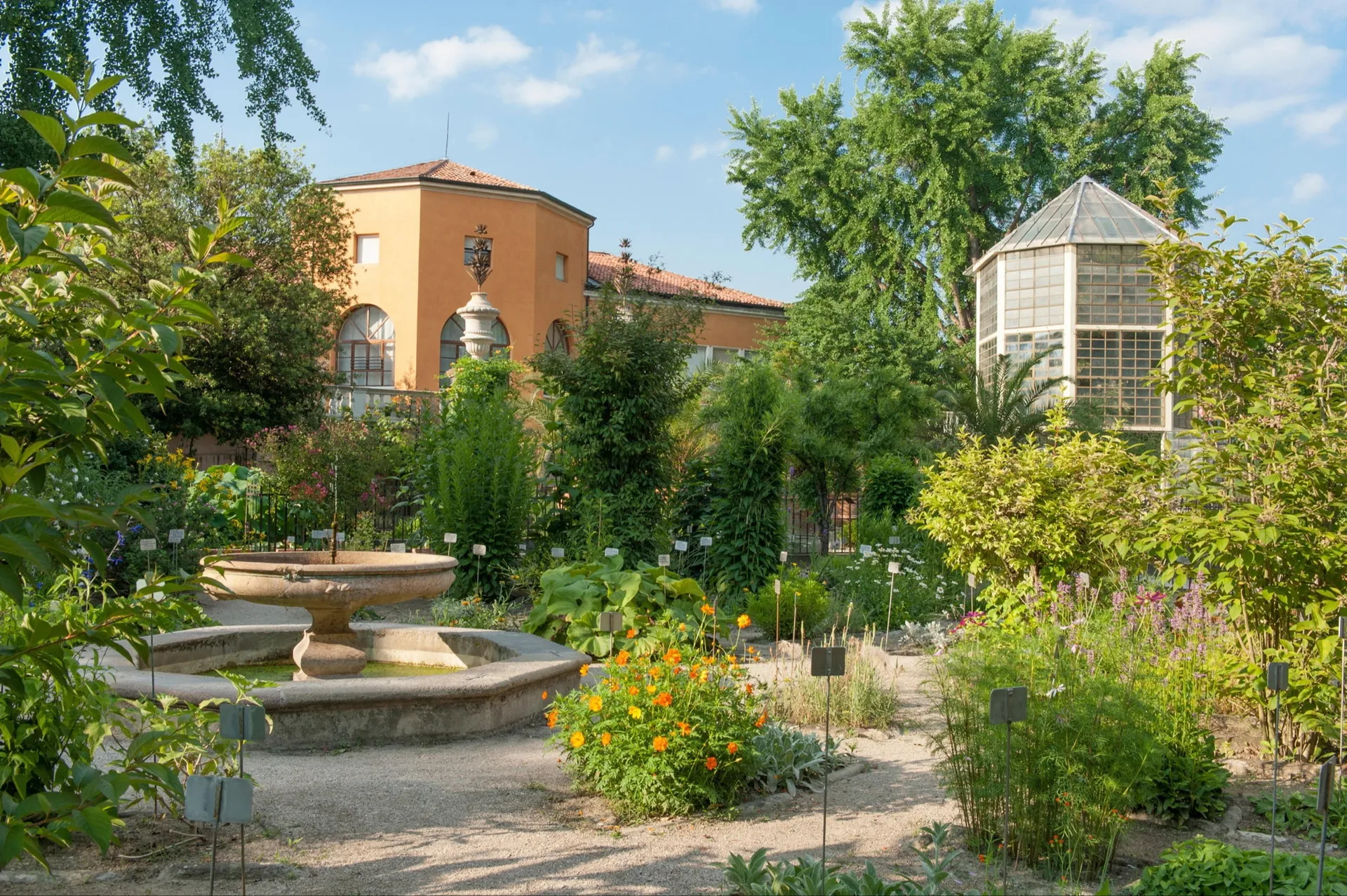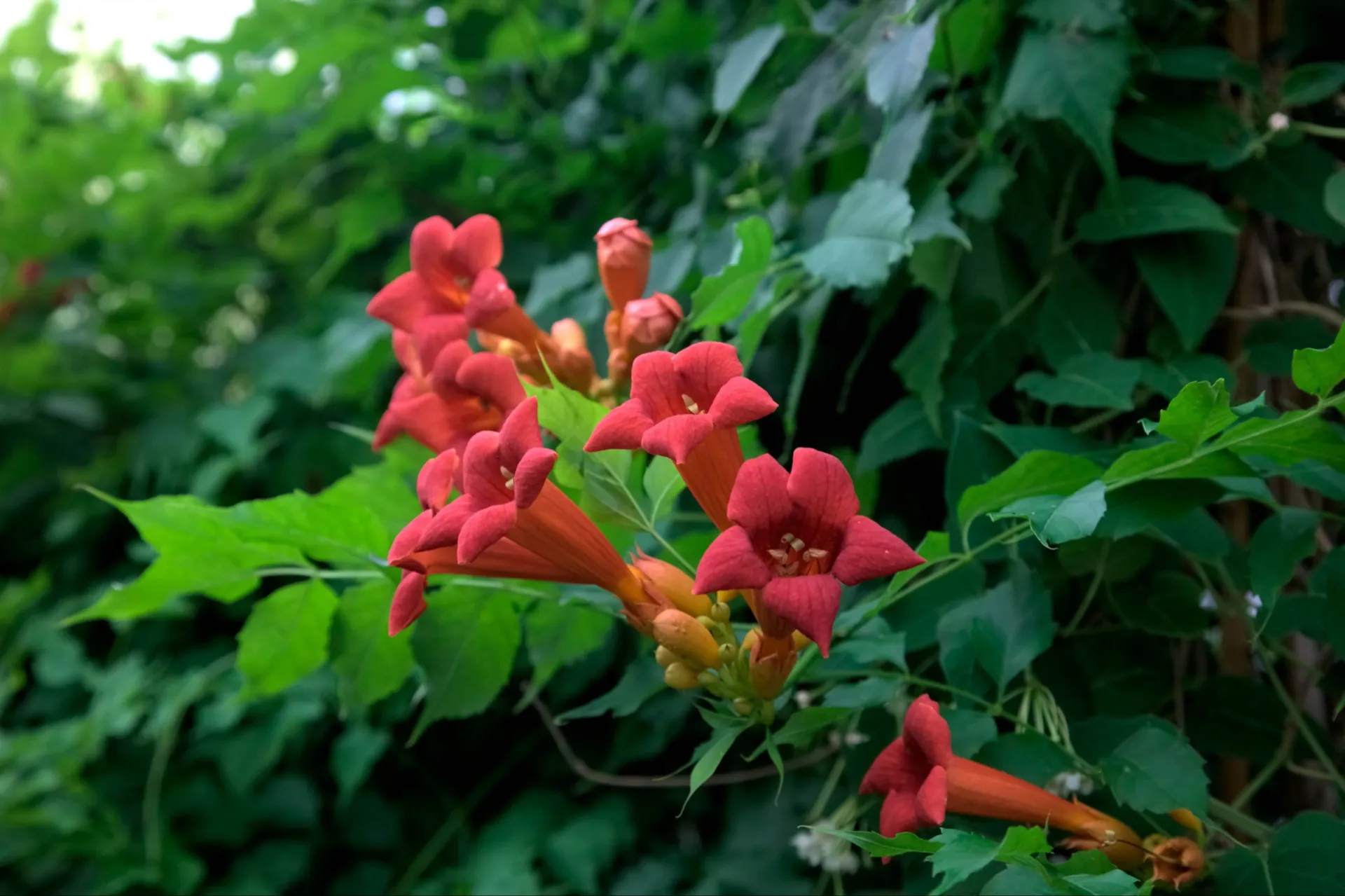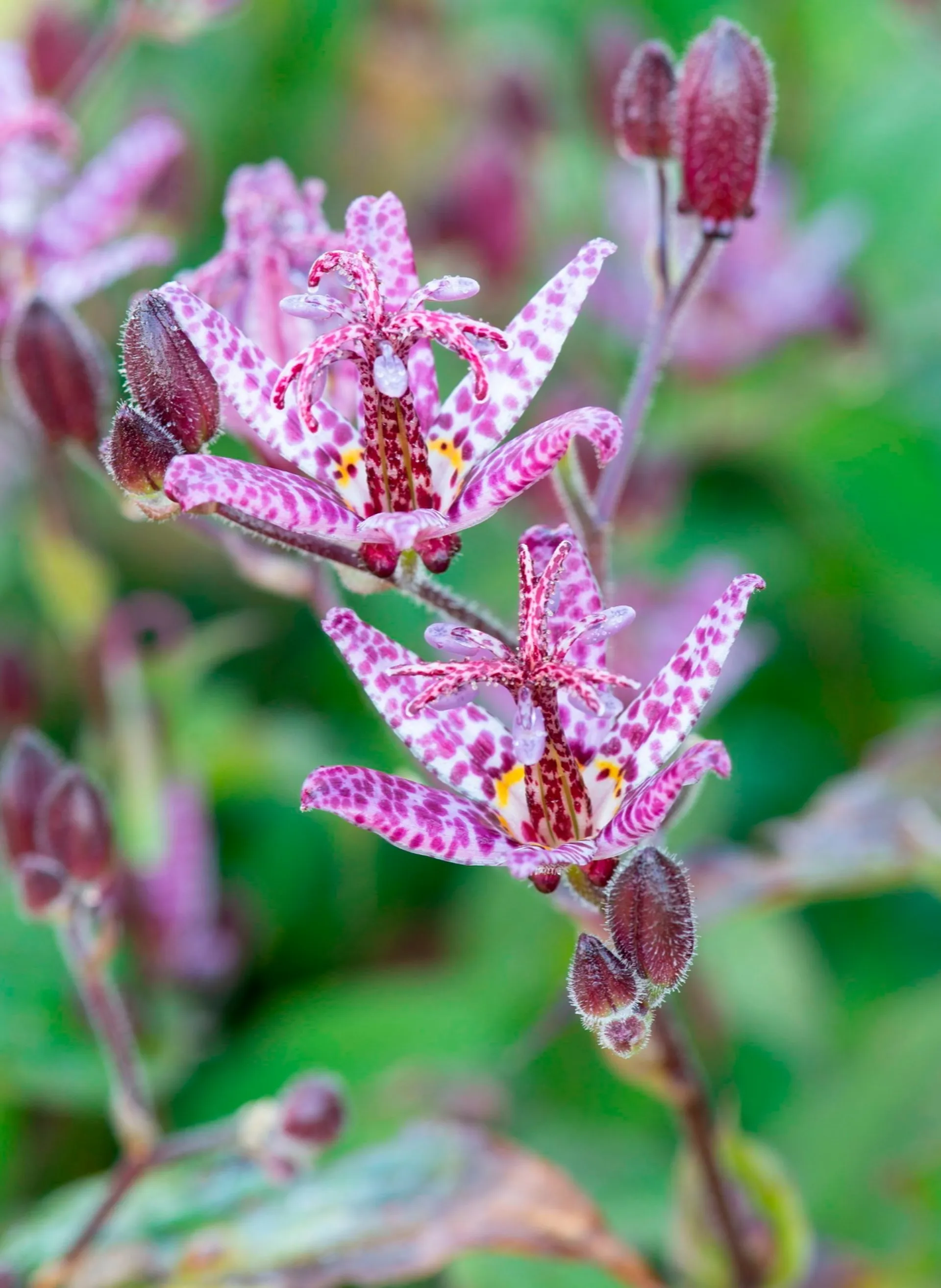尊敬的用戶您好,這是來自FT中文網的溫馨提示:如您對更多FT中文網的內容感興趣,請在蘋果應用商店或谷歌應用市場搜尋「FT中文網」,下載FT中文網的官方應用。


Here is one of my rules: when in a foreign city, check for a botanical garden. Rome’s is a disappointment and Berlin’s needs an upgrade, but the botanical gardens in New York, Edinburgh and Munich are unmissable. Even those that fall between these extremes keep green thoughts alive in a temporarily urbanised mind. One green thought leads to another, as I have just found in Italy.
這是我的一個規則:在外國城市時,要查詢植物園。羅馬的植物園令人失望,柏林的植物園需要升級,但紐約、愛丁堡和慕尼黑的植物園是不容錯過的。即使是那些介於這兩個極端之間的植物園,也能在暫時城市化的心靈中保留綠色的想法。一個綠色的想法會引發另一個,就像我剛剛在義大利發現的那樣。
Padua’s botanical garden in northern Italy traces its history back to 1545 and lays claim to be the oldest in existence. In Italy the 1540s were indeed a formative time for botanical gardens. Padua’s began with a vote by the Senate in Venice, Padua’s overlord, in May 1545. In December, Florence followed suit at the prompting of its grand duke Cosimo de Medici. While Pisa had a botanical garden before 1545, as a letter referring to it seems to prove, Padua’s claim to be the oldest rests on it being the botanical garden that has existed longest on the same site. Certainly, these Italian gardens are all older than any in England. The first English botanical garden is Oxford’s, founded in 1621 on the site of a medieval Jewish cemetery.
義大利北部的帕多瓦植物園可以追溯到1545年,聲稱是現存最古老的植物園。在義大利,1540年代確實是植物園發展的關鍵時期。帕多瓦的植物園始於1545年5月威尼斯參議院的一次投票。12月,弗洛倫斯在其大公科西莫•德•美第奇(Cosimo de Medici)的推動下也效仿了。雖然比薩在1545年之前就有一個植物園,一封提到它的信似乎證明了這一點,但帕多瓦之所以聲稱是最古老的,是因爲它是在同一地點存在時間最長的植物園。毫無疑問,這些義大利的植物園都比英國的任何一個都要古老。英國的第一個植物園是牛津大學的,於1621年在一座中世紀猶太公墓的遺址上建立。
I first saw Padua’s garden in a hot August 35 years ago. It was interesting, but in need of attention. It has received it since 2000 and is now in much better form. It is not only because it has a new visitor centre, Biodiversity Garden and Botanical Museum. Padua’s glasshouses still have a good collection of carnivorous plants and specimens of the small variety of palm tree that fascinated Goethe on his visit in 1786. He studied it carefully and went on to write a book on the “metamorphosis” of plants, arguing for an original Ur-plant from which all others derive. He had no idea of evolution and Darwin’s theories make his a curiosity.
35年前的炎熱8月,我第一次見到了帕多瓦的花園。它很有趣,但需要關注。自2000年以來,它得到了關注,並且現在形態更好。這不僅因爲它有了新的遊客中心、生物多樣性花園(Biodiversity Garden)和植物博物館(Botanical Museum)。帕多瓦的溫室仍然擁有一系列食肉植物和小型棕櫚樹標本,這些標本曾在1786年吸引了歌德。他仔細研究了它,並寫了一本關於植物「變態」的書,主張存在一個原始的「原植物」,其他所有植物都源自它。他對演化沒有概念,達爾文的理論使他的觀點成爲一種奇特的現象。
Padua’s garden was not just a site for his misunderstanding. He appreciated other plants, especially a scarlet-flowered outdoor climber that is still a mainstay of gardens in London and warm climates. Campsis radicans is extremely vigorous and willing to flower even in warm Britain, bearing those red-orange trumpet-shaped flowers that give it the popular name of Trumpet Vine. Its native home is the east coast of the US and southern Ontario.
帕多瓦的花園不僅僅是他誤解的場所。他欣賞其他植物,尤其是一種開著猩紅色花朵的室外攀緣植物,這種植物在倫敦和溫暖氣候的花園中仍然是主要的園藝植物。喇叭藤(Campsis radicans)非常旺盛,並且即使在溫暖的英國也願意開花,開著那些紅橙色的喇叭狀花朵,因此被稱爲喇叭藤。它的原產地是美國東海岸和安大略省南部。
English settlers in Virginia were quick to send plants back home, though it was an invasive climber in the wild. By 1790, it was well established on Padua’s wall, where Goethe admired its magical effect like a tapestry, covering the wall with scarlet bells. The better form now is Madame Galen, one with bigger and better trumpets, which originated in Italy and was put on the market in the 1880s. I can never decide if in ordinary gardens its vivid flowers are worth all the space its vigorous stems occupy. It has no scent.
維吉尼亞的英國移民迅速將這種野生的入侵攀緣植物送回了家鄉。到1790年,它已經在帕多瓦的牆上紮根,歌德欣賞它像掛毯一樣的神奇效果,牆上覆蓋著猩紅色的鐘花。現在更好的品種是蓋倫夫人,它的喇叭更大更好,起源於義大利,並在19世紀80年代投放市場。我始終無法決定在普通花園中,它鮮豔的花朵是否值得它強健的莖幹所佔據的所有空間。它沒有香味。


Goethe knew our campsis as Bignonia, for many years its name in gardens. Padua’s garden was not founded for botany as we now understand it. In 1533 the city’s university had a professor for the “reading of Simples”: plants with therapeutic properties. The Padua garden was to be a garden of medicinal plants, linking up with this teaching. Its naming and taxonomy were not ours, but it had a superbly designed plan.
歌德將我們的凌霄花稱爲大花藤,多年來它在花園中的名字就是如此。帕多瓦花園並非像我們現在理解的那樣爲植物學而建立。1533年,帕多瓦大學設立了一個「閱讀單味草藥」的教授職位,研究具有治療特性的植物。帕多瓦花園旨在成爲一個藥用植物園,與這門學科相聯繫。它的命名和分類不同於我們的,但它有一個精心設計的規劃。
After his visit, Goethe wrote a book arguing for an original Ur-plant from which all others derive. He had no idea of evolution
訪問後,歌德寫了一本書,主張所有其他植物都來自一種原始的烏爾植物。他對演化一無所知
The architect Andrea Moroni drew it at the very beginning. He was already working for the monastery that ceded the ground for the new garden: he devised a perfect circle in which individual flower beds would lie. The circle was defined by a perimeter of high walls against which there were 16 segmented beds. Further inside there was a second circle dominated by four rectangular subdivisions, each with a further pattern of flower beds.
最初由建築師安德烈亞•莫羅尼(Andrea Moroni)繪製。他當時已經在爲將土地讓給新花園的修道院工作:他設計了一個完美的圓圈,其中有獨立的花壇。這個圓圈由高牆圍成,牆邊有16個分段花壇。更裏面有一個由四個矩形分區組成的第二個圓圈,每個分區都有進一步的花壇圖案。
The outer circle of walls has been replaced by a rectangular one, but the curving segments are still visible and are mostly planted with fine trees. Further inside, the circle of the plan is still visible, as are the inner subdivisions and little flower beds. They are a testimony to meticulous and rational geometric planning. Botanical gardens should be based on an underlying notion of order, imposed by man on nature. Padua’s still is.
外圍的城牆已被矩形城牆所取代,但彎曲的部分仍然可見,並且大部分都種植了優美的樹木。再往裏走,平面圖的圓形仍然清晰可見,內部的劃分和小花壇也是如此。它們是細緻和合理的幾何規劃的見證。植物園應該基於人類對自然施加的一種秩序概念。帕多瓦的植物博物館依然如此。
The main inner subdivisions are defined by smart railings, also a later introduction, but the beds have a style that would be transferable to English gardens too. They are edged and divided by stone blocks laid vertically with one thin curved edge protruding just above ground level. Modern designers sometimes set brick on edge for a similar effect, but Padua’s stone blocks are more stylish.
主要的內部分區由智慧欄杆界定,這也是後來引入的,但花壇的風格也適用於英國的花園。花壇的邊緣和分隔由豎直放置的石塊組成,其中一條薄彎曲的邊緣略高於地面。現代設計師有時會將磚塊豎立放置以達到類似的效果,但帕多瓦的石塊更具時尚感。
I measured the spacing to help you copy it. Most of the little beds are about 3ft wide and long. Some of them taper to a point and make a narrowing triangle, but others are a grid of squares. The paths between them are 4ft wide and surfaced with smart grey-yellow grit. No weeds poke through.
我測量了間距,方便你複製。大多數小花壇的寬度和長度約爲3英尺。有些逐漸變尖,形成一個變窄的三角形,而另一些則是方格網。它們之間的小徑寬4英尺,鋪有精緻的灰黃色砂礫。沒有雜草冒出來。
Mild, sunny October is not hot August, but I found the outdoor plantings and the hundreds of pots more cheerful than on my former visit. Stone-edged beds of purple autumn crocuses and colchicums are rather smart, as are beds with red, not pink, amaryllis and even a grass with fluffy purple heads, Muehlenbergia capillaris, which is widely on sale in Britain. The stone edges prevent this muhly grass from becoming invasive.
溫和、陽光明媚的10月並不像炎熱的八月,但我發現室外的種植和數百個盆栽比我上次訪問時更加愉快。紫色秋水仙和秋水仙花的石邊花牀相當漂亮,紅色的孤挺花牀也很漂亮,而不是粉紅色的,甚至還有一種帶有蓬鬆紫色花穗的草,Muehlenbergia capillaris,在英國廣泛銷售。石邊可以防止這種毛茛草變得具有侵略性。
What most impressed me was the resistance of two particular plants to a Paduan dry summer, though books often say they need a damp soil. Plainly they do not. One is a tree and the other is a good herbaceous plant, flowering now.
最讓我印象深刻的是兩種植物對帕多瓦乾燥夏季的抵抗力,儘管書上常說它們需要潮溼的土壤。顯然它們並不需要。其中一種是一棵樹,另一種是一種優良的草本植物,現在正在開花。


Old tall trees are a distinction of the botanical garden, as in Florence and Pisa. A ginkgo tree goes back to 1750, before Goethe’s visit, and is a true hermaphrodite, as its male trunk has been grafted with a female branch. A superb Magnolia grandiflora was planted in 1786 and is even bigger than a fine one in the cloisters of Padua’s famous cathedral. A tulip tree towers to the sky, but what impresses me is a big Swamp cypress, which is doing likewise.
古老的高大樹木是植物園的一大特色,如同弗洛倫斯和比薩的植物園。一棵銀杏樹可以追溯到1750年,早於歌德的訪問,它是一棵真正的雌雄同體樹,因爲它的雄性樹幹上嫁接了雌性樹枝。一棵壯麗的廣玉蘭樹於1786年種植,比帕多瓦著名大教堂迴廊裏的一棵還要大。一棵鬱金香樹高聳入雲,但讓我印象深刻的是一棵巨大的沼澤柏樹,它也在同樣地生長。
Swamp cypress, or taxodium, is often found in wet ground, but it does not insist on it. Botanical gardens have big specimens in dry places and hot climates, from New York to Padua. In gardens and fields we should be more bold and use it away from water. We should also be bolder about the spotted little toad lily or tricyrtis. The official advice is always to plant this October-flowering plant in shade in damp soil. Why though is Tricyrtis formosana flowering freely in Padua, 2ft high and happy in a hot summer without irrigation? Here too I think we have been inflexible. Slugs, not sun, are what kills this excellent plant in Britain.
沼澤柏樹,又稱爲落羽杉,通常生長在溼地,但並不一定需要溼地。從紐約到帕多瓦的植物園中,有大型標本生長在乾燥的地方和炎熱的氣候中。在花園和田野中,我們應該更加大膽地將其用於遠離水源的地方。對於斑點小蟾蜍百合或三百合,我們也應該更加大膽。官方建議總是將這種10月開花的植物種植在陰涼潮溼的土壤中。然而,爲什麼在帕多瓦,臺灣三百合能夠在沒有灌溉的炎熱夏季中自由開花,長到2英尺高並且茁壯成長呢?在這裏,我認爲我們過於死板。在英國,殺死這種優秀植物的是蛞蝓,而不是陽光。
Padua’s botanical garden is good to visit, but the overriding reason for visiting the city as a tourist is its Arena chapel, frescoed by Giotto, the maestro, from 1303-1305. With green thoughts in mind I visited it too and became aware of details I had never expected. Art and flowers have featured in this column all year, but I will save Giotto’s surprises for that appropriate season whose founding event he also painted, Christmas.
帕多瓦的植物園固然值得一遊,但作爲遊客來這座城市最重要的原因還是它的競技場教堂,該教堂的壁畫由大師喬託在1303年至1305年間繪製。帶著綠色的思緒,我也參觀了這座教堂,並發現了一些我意想不到的細節。藝術和花卉一直是這個專欄的主題,但我會把喬託的驚喜留到他也繪製了創辦事件的那個合適的季節——耶誕節。
Find out about our latest stories first — follow @ft_houseandhome on Instagram
第一時間瞭解我們的最新報導——關注@ft_houseandhome(Instagram)